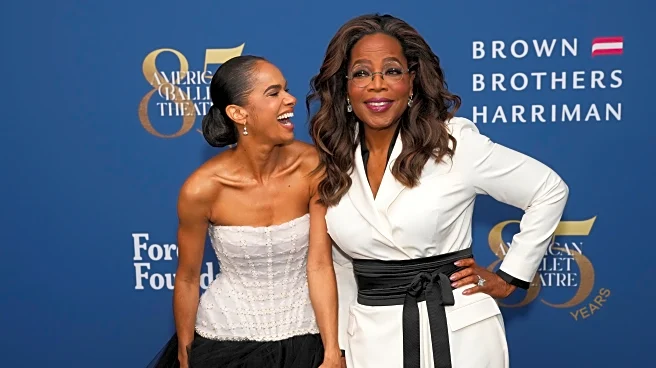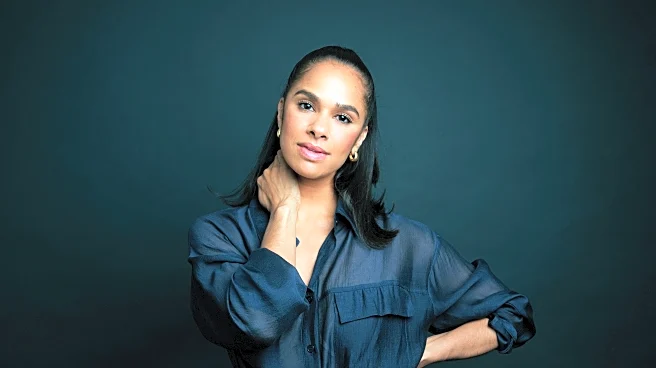What's Happening?
Misty Copeland, the first Black female principal dancer at the American Ballet Theatre (ABT), has retired after a groundbreaking career. Her farewell performance took place at a gala in Manhattan's Lincoln
Center, attended by notable figures such as Oprah Winfrey and Debbie Allen. Copeland, who joined ABT in 2001 and became a principal dancer in 2015, has been a significant figure in promoting diversity within the ballet world. Her retirement marks the end of an era, as she was the only Black female principal dancer at ABT. Copeland plans to continue her work in increasing diversity in dance through her foundation and other initiatives.
Why It's Important?
Copeland's retirement is significant as it highlights ongoing challenges in diversity, equity, and inclusion within the ballet industry. Her career has been a beacon for aspiring dancers of color, demonstrating that barriers can be broken in traditionally exclusive art forms. The absence of a Black female principal dancer at ABT following her departure underscores the need for continued efforts to promote diversity. Copeland's influence extends beyond the stage, as she continues to advocate for inclusivity through educational programs and her foundation, potentially inspiring systemic change in the arts.
What's Next?
Copeland has expressed her intention to remain active in the dance community, focusing on initiatives that promote diversity. Her foundation's 'Be Bold' program aims to provide opportunities for young children of color, fostering the next generation of diverse dancers. As Copeland transitions from performing to advocacy, her efforts may influence other institutions to prioritize diversity and inclusion. The ballet world will be watching to see how her initiatives impact the industry and whether other companies follow suit in addressing representation gaps.
Beyond the Headlines
Copeland's retirement comes at a time when diversity, equity, and inclusion efforts face challenges across various sectors. Her departure from ABT highlights the importance of sustained advocacy and the need for structural changes within the arts. Copeland's legacy may inspire broader cultural shifts, encouraging institutions to reevaluate their practices and embrace diversity as a core value. Her work could lead to increased visibility and opportunities for underrepresented groups, potentially reshaping the cultural landscape.












